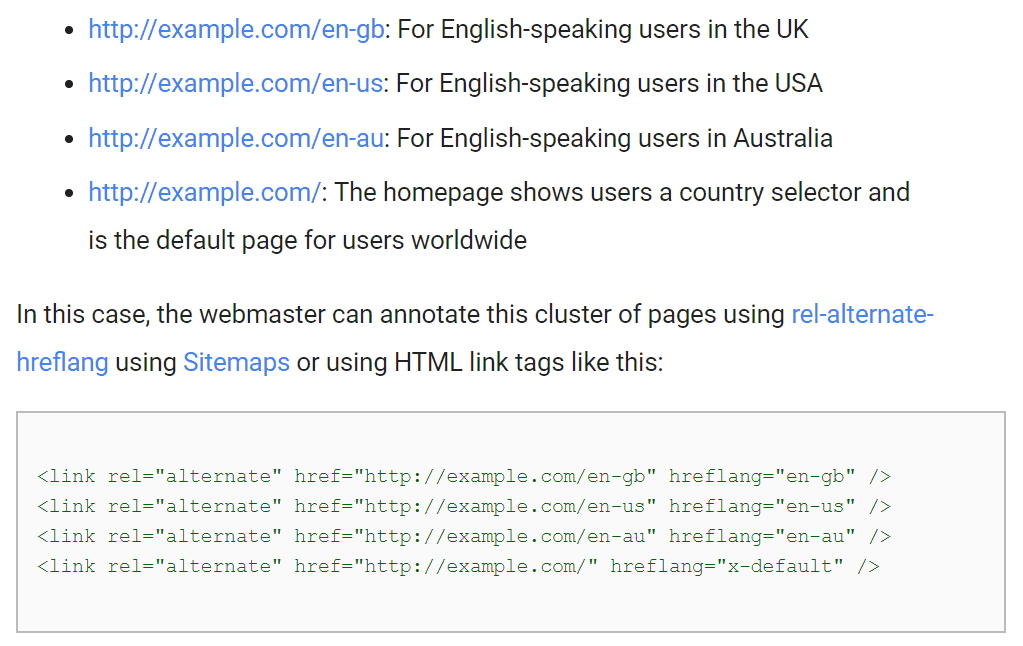Hreflang annotation also x-default
This means that the URL in question is defined as an hreflang alternate, and also defined as the x-default hreflang.
Why is this important?
Hreflang is used to inform search engines which pages to show in the search results in different locations. Hreflang is specific, and the meaning of hreflang annotations are universally understood. The x-default hreflang is for situations where you want to provide a generic fallback page for any language/location.
The hreflang="x-default" value is primarily used to delineate a default page that doesn’t target any specific language or locale. A typical use-case is on a homepage that uses a country selector.
The original Google announcement blog post included a useful example of this:

This is the typical setup, where the x-default page does not also target a specific language. In fact this is the only example Google included in their post.
However it is also possible (and valid) to define a page for a specific locale/language AND also as the x-default hreflang - in this case it would both serve as the correct page for the targeted location, but also as the fallback when no other pages are suitable.
Despite this often being intentional, sometimes it is not. Sometimes, x-default has been included by accident, and the page is not a suitable fallback for the rest of the world. For example, English is a fairly good language option to use as your fallback option, since so many people speak it, whereas Welsh is not, since very few people speak it across the world.
What does the Hint check?
This Hint will trigger for any URL which is defined as an alternate using hreflang annotations, and also as the x-default.
Examples that trigger this Hint:
Consider the URL: https://example.com/en/page-a/
The Hint would trigger for this URL if it contained the following hreflang:
<link rel="alternate" href="https://example.com/en/page-a/" hreflang="en-gb" />
<link rel="alternate" href="https://example.com/en/page-a/" hreflang="x-default" />
<link rel="alternate" href="https://example.com/de/page-a/" hreflang="de-de" />Why is this Hint marked 'Insight'?
This Hint is an 'Insight', which means there isn't necessarily any action that needs to be taken - the Hint is intended to alert your attention to something, rather than flagging up an issue that needs fixing.
It is perfectly valid for a specific hreflang page to also be the x-default, so there is certainly no reason to be too worried about it.
However, it is worth reviewing the setup and ensuring it fits the overall market of the website. If you decide the x-default is incorrect, you would either need to remove the x-default entirely, select a replacement page to act as x-default, or develop a neutral 'country selector' solution like in the original example above.
Further Reading
 Sitebulb Desktop
Sitebulb Desktop
Find, fix and communicate technical issues with easy visuals, in-depth insights, & prioritized recommendations across 300+ SEO issues.
- Ideal for SEO professionals, consultants & marketing agencies.
 Sitebulb Cloud
Sitebulb Cloud
Get all the capability of Sitebulb Desktop, accessible via your web browser. Crawl at scale without project, crawl credit, or machine limits.
- Perfect for collaboration, remote teams & extreme scale.